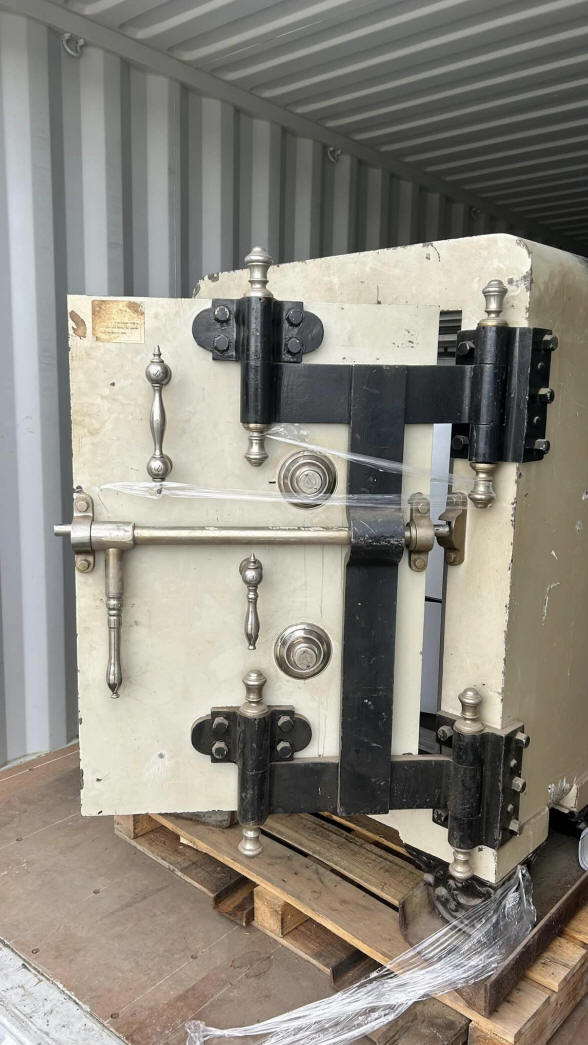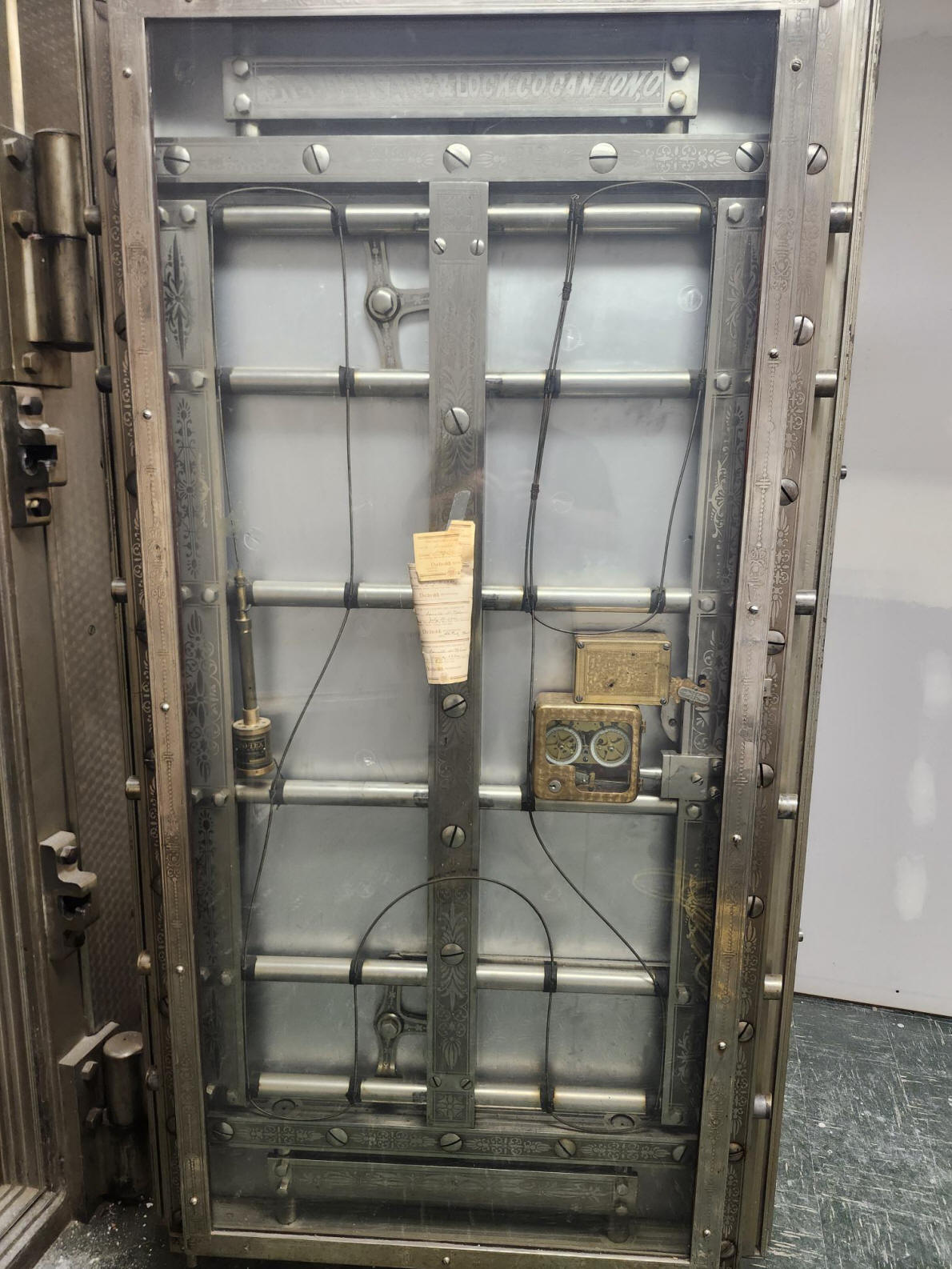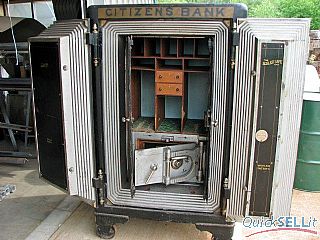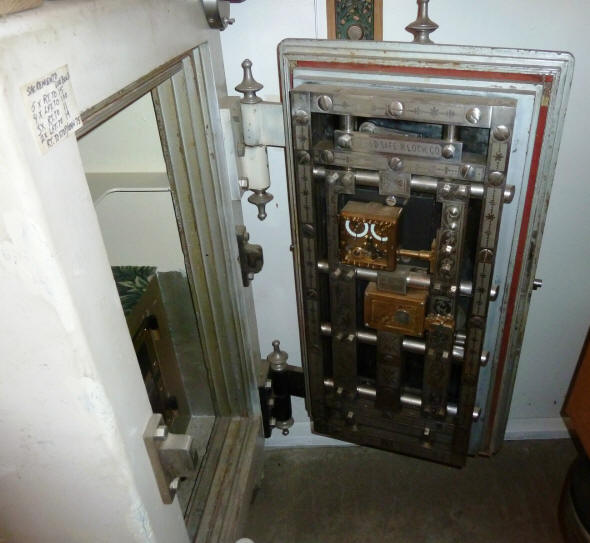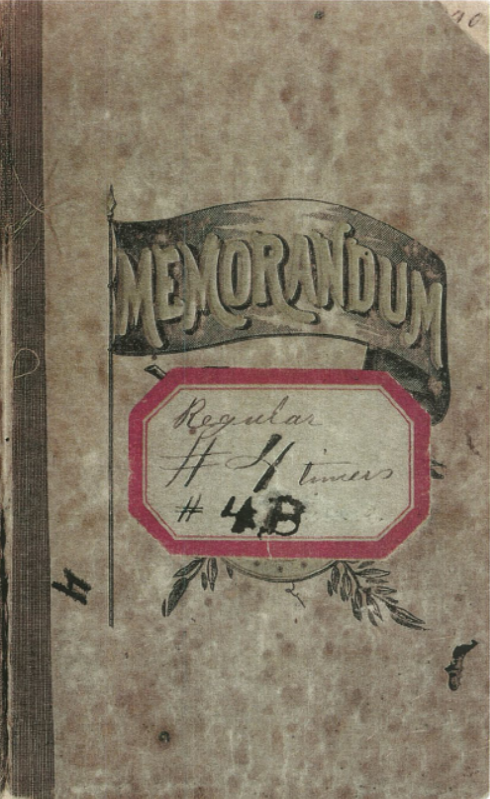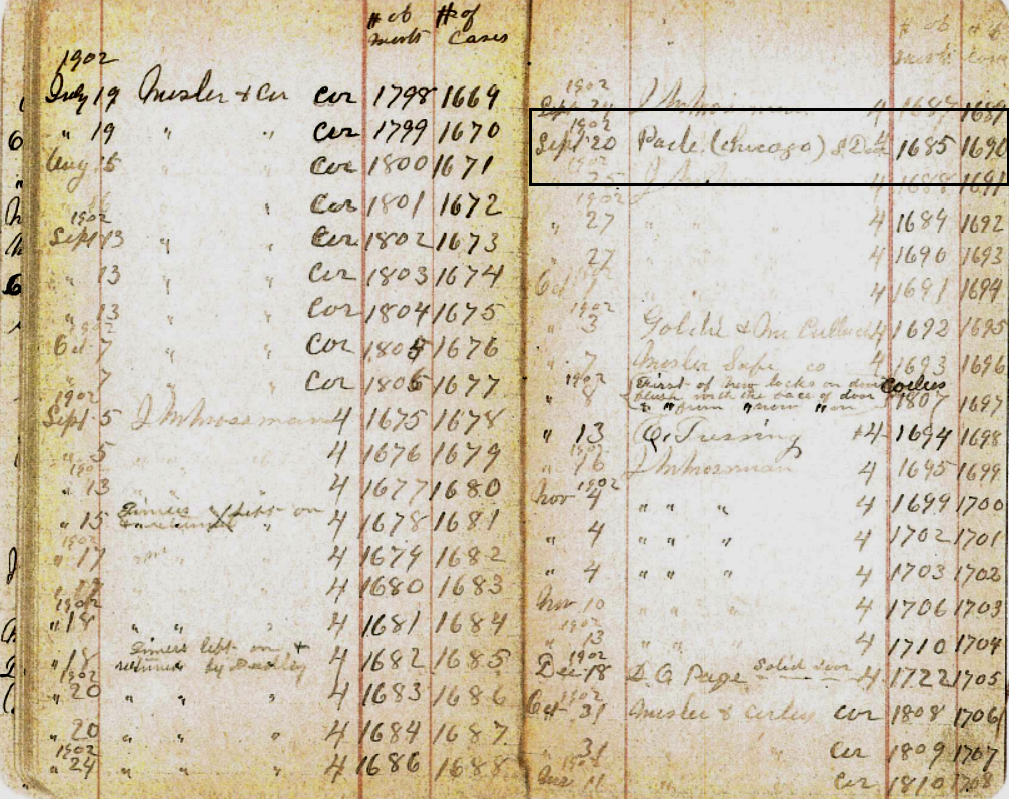|
Sargent & Greenleaf, Rochester New York - 2 movements, Model #4
The third photo shows an example of the Model #4 (v.2) with a solid door that was an after-market insert where there had originally been a pane of glass. The insert has the same damascene pattern as the case and so was surely supplied by S&G and is secured by the same tabs as used for the standard glass insert. Contrast this with the door shown on the photos directly above this one. There the door is one solid piece, no insert. What looks like an insert is actually milled into the solid door and then finished off with the matching damascene pattern along with the case. This is how these 'coin door options' were made as an OEM from the factory.
A. Model #4 (later no. 6204), version 1. c. 1879. In July of 1878, Sargent and Greenleaf introduced their Model #4 time lock. It was smaller than the #3 giving it the advantage of being able to fit in more and smaller existing vault doors, but with no compromise in security or features and thus still having a hefty $400 retail price tag. This model was the first time the firm employed three new features. First, were Geneva stops which would not become standard on the rest of their line of time locks until a few years later. Second, a split front movement plate, the beginnings of a modular design that would become fully developed later. Third, the shift from the door having a lever type lock to the simpler (cheaper) handcuff style. By 1888 this type of door lock was used on all Sargent time lock doors (1). The lock illustrated has 46 hour, solid enamel dials, the earliest version. These as well as the 46 hour version were the earliest type used between the lock's introduction in 1878 and the switch to the company's ubiquitous 'wagon wheel' style in the later 1880's. Notice that the locks illustrated on the prior page are also labeled as Model #4 even though they have only one movement and look and function quite differently from those depicted on this page. Sargent used their model numbers to denote the size of the lock case. Thus because both used the same sized case, they were both called number four. This made sense since size was the first consideration as to whether a time lock could be installed within a vault door. This is the same lock illustrated in American Genius, page 195-196. Sargent made 365 of the first version with 15 known to survive. 4 1/2" x 4 1/2" x 2 3/4". Case, bolt and movement #217. file 149 B. Model #4 version 2. c. 1884. This version had subtle differences from the earlier version. The Geneva stops are of a more conventional style, the movements have an additional 2 hours giving a 48 hour duration, and the movements have an additional two bolts at the bottom that provide additional attachment to the case. See a series of photos and videos of the cleaning and restoration of this lock. Case, bolt and movement #443. file 116 C. Model #4 version 3. c. 1889. By 1889 the Model #4 had 72 hour movements with matching dials. The wagon wheel design was adopted to conform with that used in other models of Sargent's time locks. Geneva stops have been move toward the case sides to accommodate the larger spring barrel needed for the extended time duration. Jeweled bronze case, spotted pattern. About 800 of this style were made with 30 or so thought to have survived. Case and bolt #750, movement #747. file 107 D. Model #4, September 20, 1902. Same as 'C' but equipped with less common solid door in place of glass. This was used in areas where heavy coin bags could come into contact with the time lock's door. Crystalline pattern is well illustrated. Dials have Sargent & Greenleaf Co. on them which was introduced in 1896. Another solid door lock illustrating the spotted pattern. This lock is documented in a S&G logbook showing the lock was ordered September 20, 1902. The customer is hard to read but appears to be Pacle (Chicago) S. Door, meaning solid door. See photo of log book entry below. Case and bolt #1690, movement #1685. file 87 E. Model #4. c. 1930's. A version with polished case. Versions, post 1918, had the name Sargent & Greenleaf, Inc. on the time dials. Engraving was eliminated from the rear plate, bolt work and drop lever. All versions of the model 4 cost $400, just as much as the larger and equally secure model 3 and 2. Sargent continued to make the model 4 at least through 1950, with total production eventually exceeding 5000 units, making it Sargent & Greenleaf's most successful design. However, like most small-format time locks, the model 4 was commonly mounted in smaller safes and often junked or scrapped with the safe. Consequently the model 4 is still rather rare with about 200 examples of all versions surviving (2). Case #3465, movement #4933. file 81 F. Model #4, c. 1930's. This lock has a special order heavy chrome plating. Some Urban McNeal safes used this chrome plated case design. I have seen only one other such example. Case #3552, movement # 1676. file 172 G. Model #4 c. later 1920's-1930's. Satin nickel case. Similar to example E, but a bit later in the production run. By this time the style for safes and vaults had changed to the sleek and silver colored art deco designs. S&G also changed the color of their screws from a deep blue in their earlier, brass-cased models to a lighter blue in their later silver-cased models. This was true across their production line. These were still very high quality movements as seen in the two photos of the movement front and rear plates. The movement wheel train is fully jeweled through to the main spring barrel. Even the best clocks of the time did not have this extensive use of pivot jewels in their movements. No other time lock movement that this author has seen from S&G or others using E. Howard or Seth Thomas has every wheel in the train, save the mainspring barrel, jeweled. Case #3883, movement #5358. file 260 H. Model #4, c. 1930's. A modification by Andy Kotas in the 1960's. See more details on his as well as other Sargent & Greenleaf time lock modifications. Case #2668, modification stamped #454, file 160
Photos of a Sargent and Greenleaf #4 mounted to an inner safe door. The conventional place for a time lock is normally on the main door to protect the entire safe. Here it appears that only the inner, separate safe compartment merited the extra security of a time lock. It is also possible that the configuration of the unusual main door that was split down the middle prevented this type of installation on the main doors. The next row of photos show a more conventional installation on a Diebold safe door. Diebold began operations in 1851 making safes and vaults, but did not enter the time lock business until 1894. So there are numerous examples of Diebold safes with Sargent and Yale time locks. There were probably others too.
Sargent and Greenleaf ledger book showing the order for lock illustrated above as D. (1), (2), (3) American Genius Nineteenth Century Bank Locks and Time Locks, David Erroll & John Erroll, pp. 195; pp 197; pp. 322
|
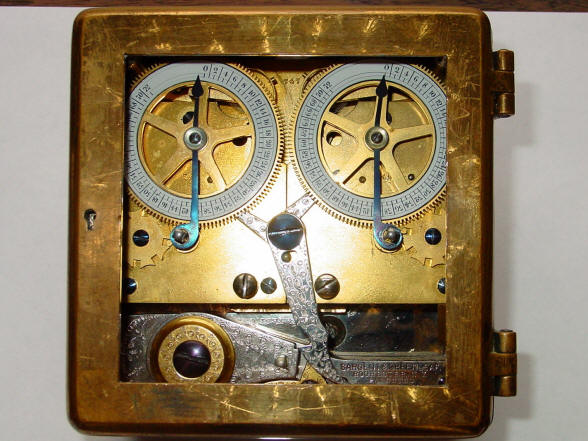
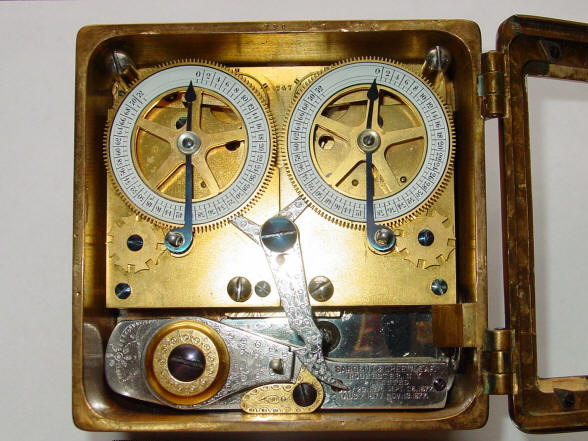 C
C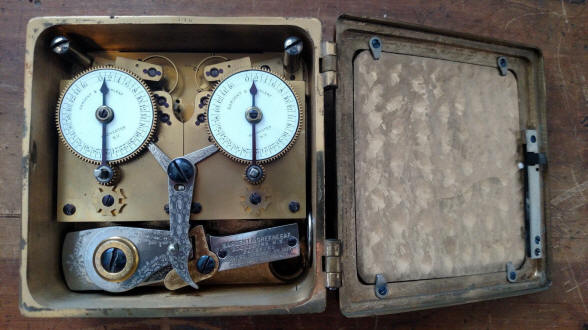
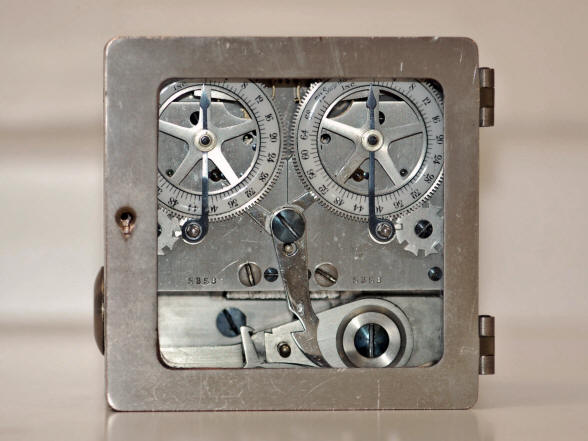
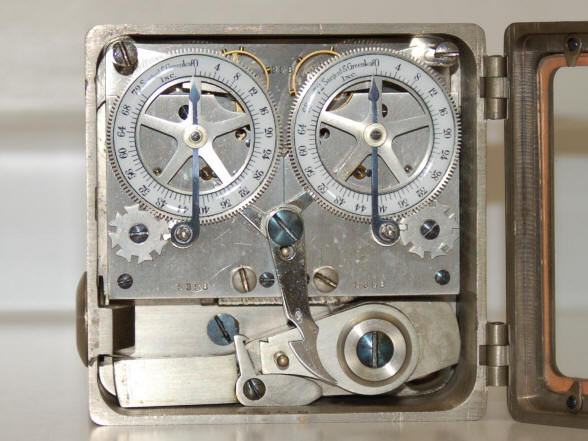 G
G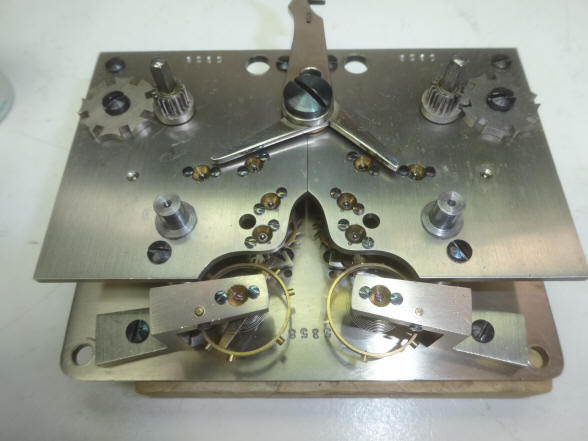
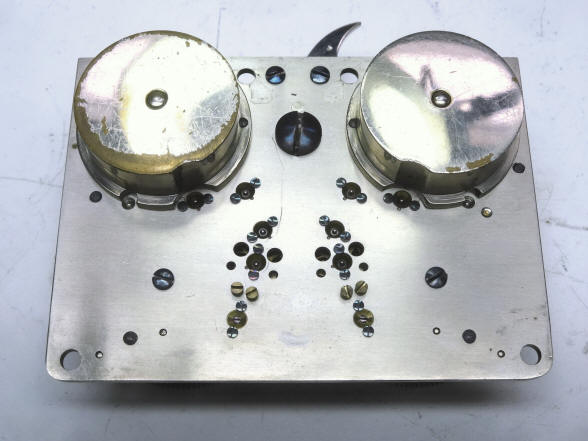 G
G